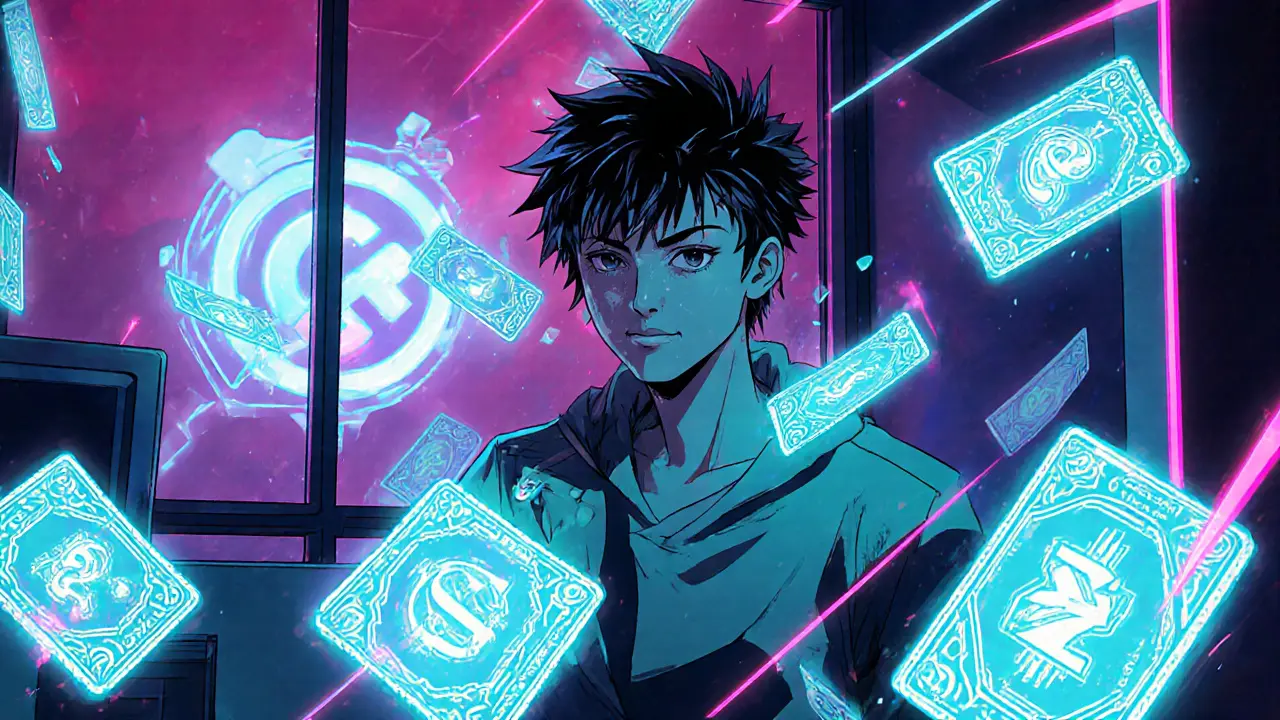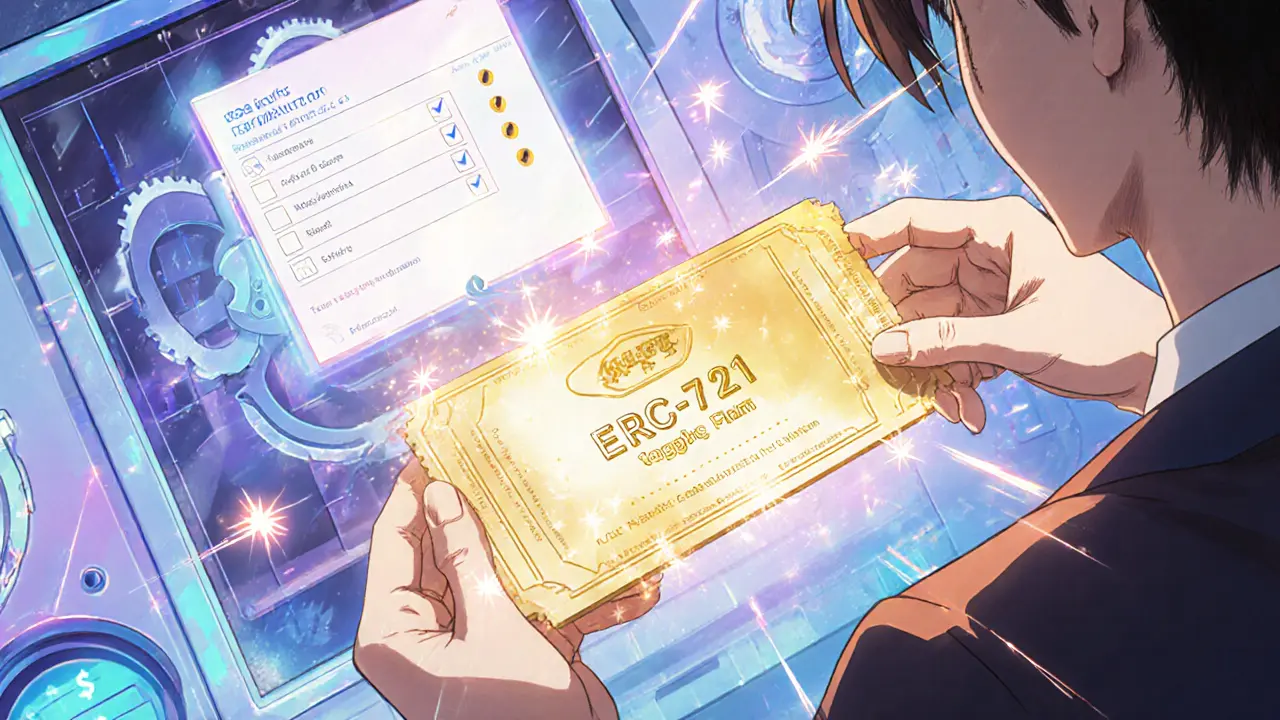FEAR Play2Earn NFT Ticket Airdrop: Full Details & How It Worked

FEAR Airdrop Value Calculator
Calculate FEAR NFT Ticket Value
Based on the FEAR Play2Earn NFT ticket airdrop from 2021, calculate the current value of your tickets (25 $FEAR per ticket).
Quick Takeaways
- FEAR released two airdrop rounds: 2,000 NFT tickets (each worth 25FEAR) and a later 20,000$FEAR distribution.
- Tickets were tied to the Play2Earn gaming model and required a CoinMarketCap registration.
- Over 500 wallets received the second‑stage $FEAR tokens, totaling about $30,000 USD.
- The campaigns closed in 2021, but the structure offers a template for future NFT‑gaming drops.
- Key metrics: $1.24M raised across four funding rounds; market cap around $117K at launch.
When you see a headline about a "Play2Earn NFT ticket airdrop," you probably wonder: what exactly was given away, who could claim it, and did it actually move the market? Below we break down the entire FEAR Play2Earn NFT ticket airdrop, from the initial 2,000‑ticket blast to the larger $FEAR token giveaway, and we highlight the practical lessons for anyone eyeing similar drops.
FEAR NFT Games is a blockchain gaming studio that builds Play‑to‑Earn experiences on Ethereum‑compatible networks. The company raised $1.24million in four financing rounds and, at the time of the airdrop, held a market capitalization of roughly $117,470 USD. Their flagship mechanic revolves around collectible NFTs that double as in‑game tickets.
What Was the FEAR Play2Earn NFT Ticket Airdrop?
The first wave, announced in early 2021, distributed Play2Earn NFT tickets - unique ERC‑721 tokens that granted holders the right to earn 25$FEAR tokens per ticket. A total of 2,000 tickets were minted, each valued at 25FEAR, making the whole batch worth 50,000$FEAR (approximately $30,000 USD at the time).
This giveaway was partnered with CoinMarketCap, the crypto data aggregator. Participants had to complete a short verification on CoinMarketCap’s airdrop page, link a compatible wallet, and confirm ownership of the NFT ticket.
How the Airdrop Was Structured
Two distinct phases can be summed up in the table below.
| Phase | Asset Distributed | Quantity | Total Value (USD) | Eligibility |
|---|---|---|---|---|
| Phase1 | Play2Earn NFT tickets | 2,000 tickets | $30,000 (≈50,000$FEAR) | CoinMarketCap registrants + wallet verification |
| Phase2 (FEARxCoinMarketCap) | $FEAR tokens | 20,000$FEAR | $30,000 | Over 500 winners, based on ticket‑hold time and activity |
Phase1’s tickets acted as a gateway. Holders who kept the ticket for at least 30 days automatically qualified for Phase2, where the actual $FEAR tokens were airdropped on September24,2021, at 2PMEST.

Eligibility Criteria & Participation Steps (What Users Had to Do)
- Visit the official CoinMarketCap airdrop page.
- Connect a non‑custodial wallet (MetaMask, Trust Wallet, etc.).
- Complete a KYC questionnaire to satisfy anti‑fraud requirements.
- Claim the free Play2Earn NFT ticket - the transaction cost was covered by the project.
- Hold the ticket in the wallet for a minimum of 30 days; the smart contract automatically logged eligibility.
- On September24,2021, the contract dispersed 20,000$FEAR tokens to all qualifying addresses.
Because the airdrop closed on the stated date, any attempt to claim now returns the message “It looks like you are too late! The airdrop is closed.” This final message appears on the CoinMarketCap portal and confirms that the distribution is fully completed.
Results & Impact
The airdrop achieved several concrete outcomes:
- Token circulation: 20,000$FEAR entered the market, providing liquidity for early‑stage traders.
- Community growth: The project’s Discord swelled from a few hundred members to over 3,000 active participants within a month.
- Media attention: Partnerships with CoinMarketCap amplified visibility, resulting in coverage on at least five major crypto news sites.
- Market cap bump: FEAR’s market cap rose from $90K to $117K in the week following the second phase.
From an investor perspective, the airdrop served as a low‑cost entry point. Holding a ticket granted early exposure to a token that, at the time, traded around $0.60 USD per $FEAR. For many participants, the airdrop seed‑planted long‑term interest in the broader Play2Earn ecosystem.

Why the Airdrop Closed - Common Pitfalls & Lessons Learned
Even successful drops have dark sides. Here are the three main reasons the FEAR airdrop is now closed and what future projects can learn:
- Fixed supply windows: The smart‑contract coded an immutable end‑date. Once the timestamp passed, no further claims could be processed. Projects should consider a grace period or manual claim option for late‑joiners.
- KYC friction: Some users abandoned the process because the KYC form required a government ID. Lowering verification barriers (while staying compliant) can improve participation rates.
- Liquidity constraints: After the token distribution, FEAR listed on a modest DEX with limited depth. Early sellers drove price volatility. Pairing an airdrop with a solid liquidity plan-e.g., a lock‑up or a market‑making partner-helps stabilize price.
Overall, the event demonstrated how NFT tickets can function as both a marketing hook and a token‑distribution conduit, but the execution details matter just as much as the hype.
How to Stay Informed About Future FEAR Drops
Even though the 2021 campaigns are over, FEAR NFT Games continues development on its Play2Earn platform. To catch the next opportunity:
- Follow the official Telegram channel (no external links required, but the URL is shown for reference).
- Subscribe to the CoinMarketCap airdrop newsletter; they often announce partner projects first.
- Monitor the project’s GitHub repo for new smart‑contract releases-these often precede token‑mint events.
- Check blockchain explorers (Etherscan or PolygonScan) for large token mint transactions linked to the FEAR contract address.
Being active in the community and keeping wallets ready (with a small amount of gas‑fee crypto) ensures you can claim instantly when the next round opens.
Frequently Asked Questions
What exactly were the Play2Earn NFT tickets?
Each ticket was an ERC‑721 NFT that represented a claim for 25$FEAR tokens. Holding the ticket for the required period automatically qualified the wallet for the second‑phase token airdrop.
Do I still have a chance to receive $FEAR from the 2021 airdrop?
No. The distribution closed on September24,2021, and the smart contract no longer accepts claims. The message you see on the CoinMarketCap page confirms the airdrop is finished.
How was the value of each ticket determined?
The team pegged each ticket to 25$FEAR tokens, which at launch traded around $0.60 USD each. This gave the ticket an approximate market value of $15 USD at the time of the airdrop.
What should I watch for in future NFT‑gaming airdrops?
Key signals include a clear eligibility timeline, low‑friction KYC, and a solid liquidity plan for the token after distribution. Also, reputable partners (like CoinMarketCap) add credibility.
Where can I find the smart‑contract address for $FEAR?
The address was published on the official FEAR Twitter and Discord channels during the airdrop. You can also locate it on Etherscan by searching for “FEAR Token” once the project re‑launches.
Lesley DeBow
October 11, 2025 AT 02:34Contemplating an airdrop invites us to consider the nature of value itself. When a token is distributed freely, the question shifts from price to purpose. The FEAR tickets illustrate a bridge between speculative assets and utility in gaming. Their design suggests that reward mechanisms can be encoded as digital proof of participation. In that sense, the airdrop becomes a philosophical experiment in collective incentive.
DeAnna Greenhaw
October 11, 2025 AT 03:57One must first acknowledge the sheer audacity required to orchestrate an airdrop of this magnitude, particularly within the nascent Play2Earn ecosystem. The initial phase, comprising two thousand ERC‑721 tickets, was not merely a giveaway but a calculated infusion of liquidity designed to stimulate market activity. Each ticket, valued at twenty‑five $FEAR, functioned simultaneously as a collectible and a future claim, thereby embedding a vesting schedule within the tokenomics. By partnering with CoinMarketCap, the project leveraged an established platform to amplify reach, ensuring that the distribution extended beyond the confines of an insular community. The mandatory KYC process, albeit a barrier to some, conferred a veneer of regulatory compliance that, in turn, may have allayed institutional skepticism. Furthermore, the stipulation that tickets be held for a minimum of thirty days introduced a temporal dimension to the incentive structure, effectively rewarding patience over impulsivity. The subsequent disbursement of twenty thousand $FEAR tokens to over five hundred qualifying wallets injected tangible utility into the ecosystem, fostering a nascent secondary market. Observers noted an immediate surge in Discord engagement, a testament to the social scaffolding that underpins many successful blockchain projects. Media coverage across at least five reputable crypto outlets elevated the project's profile, thereby attracting ancillary investment and developer interest. The market cap augmentation from ninety to one‑seventeen thousand dollars within a single week underscores the catalytic effect of well‑executed token distributions. Notwithstanding these successes, the airdrop was not without its shortcomings. The immutable end‑date encoded in the smart contract precluded any post‑deadline remediation, a rigidity that future initiatives would do well to relax. Friction introduced by the KYC questionnaire likely deterred potential participants who lacked the requisite documentation, highlighting a tension between compliance and accessibility. Moreover, the token’s listing on a modest DEX, characterized by limited depth, precipitated heightened volatility as early holders liquidated positions. In sum, the FEAR airdrop stands as a compelling case study in the symbiotic relationship between NFT mechanics and token distribution, illustrating both the promise and the perils inherent in such endeavors.
Jim Greene
October 11, 2025 AT 05:21Wow, this breakdown really opened my eyes to how clever these drops can be! 🎮🚀 The way the tickets turned into actual $FEAR tokens is a neat utility hack. I love that the community got a real boost – over 3,000 Discord members is impressive. If you’re aiming to jump into Play2Earn, keep your wallet ready and your gas stocked. Stay optimistic, the next wave could be just around the corner! 😊
Della Amalya
October 11, 2025 AT 06:44Building on the earlier analysis, it's clear that the FEAR initiative succeeded in forging a sense of belonging among participants. By rewarding patience, the project subtly encouraged long‑term engagement rather than fleeting speculation. The dramatic increase in Discord activity reflects an organic community formation rather than a fabricated hype bubble. As inclusive mentors, we can highlight how such structures pave the way for sustainable ecosystems where players feel genuinely valued.
Teagan Beck
October 11, 2025 AT 08:07Honestly, the airdrop felt pretty chill overall. The steps were straightforward, and I appreciated the low‑key vibe. Just make sure you have a bit of gas on hand next time.
Isabelle Graf
October 11, 2025 AT 09:31The whole airdrop looks like a poorly thought‑out marketing stunt.
Millsaps Crista
October 11, 2025 AT 10:54You’ve got the right spirit, Jim! Keep that optimism flowing, but also keep an eye on the token’s liquidity to avoid nasty slumps. Remember, a strong community can steer a project through rough patches. Let’s keep the momentum and push for better tokenomics in the next round.
Matthew Homewood
October 11, 2025 AT 12:17When we examine the architecture of an airdrop, we see a microcosm of broader economic principles. The distribution mechanism mirrors a form of universal basic income, albeit contingent on digital ownership. Yet, unlike fiat policies, the blockchain ledger offers immutable transparency. This duality invites both hope and skepticism, urging participants to reflect on the nature of wealth creation. In the end, the philosophical implications may outweigh the immediate monetary gain.
Shane Lunan
October 11, 2025 AT 13:41Nice try. No thanks. Spam.
Jeff Moric
October 11, 2025 AT 15:04I appreciate the thoroughness of the post and can see why many found value in the FEAR airdrop. It’s encouraging to witness a project that balances community growth with tangible token distribution. As an empathetic listener, I’d suggest newcomers keep their wallets ready and stay engaged with official channels. This way, they won’t miss future opportunities. Let’s continue fostering a supportive environment for all participants.
Bruce Safford
October 11, 2025 AT 16:27Look, they put a big shiny label on "airdrop" but what they really did was a controlled experiment in market manipulation. The KYC gate is just a smoke screen, and the token listing on a thin DEX is a perfect storm for pump‑and‑dump. I swear they knew the price would spike then crash, feeding the insiders. It’s all a big con to get fresh funds while the average joe gets left with dust. Trust no one who hides the contract address behind a Twitter post and pretends it’s for transparency.
Linda Campbell
October 11, 2025 AT 17:51The FEAR airdrop exemplifies a misallocation of resources that, in my view, undermines national economic sovereignty. By flooding the market with artificially inflated tokens, the project destabilizes legitimate domestic ventures. Such reckless tokenomics should be condemned in the strongest terms. It is imperative that patriotic investors prioritize assets that truly benefit our nation.
EDMOND FAILL
October 11, 2025 AT 19:14That rundown really clears up how those NFT tickets doubled as a gateway to actual token rewards. Knowing the exact steps-register on CoinMarketCap, link a wallet, pass KYC-means it’s easier to plan for any future drops. The 30‑day hold requirement also makes sense as a filter for serious participants. Keeping an eye on the project’s GitHub and Telegram will definitely help anyone stay ahead of the curve. Simple, informal, and useful.